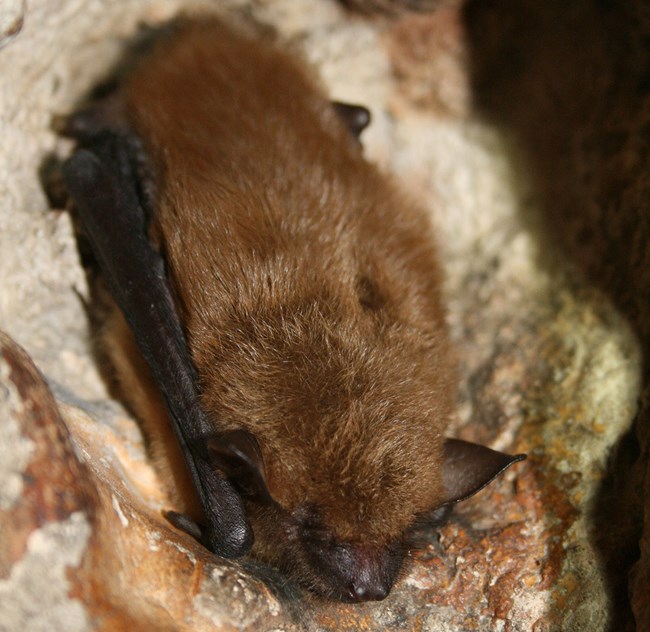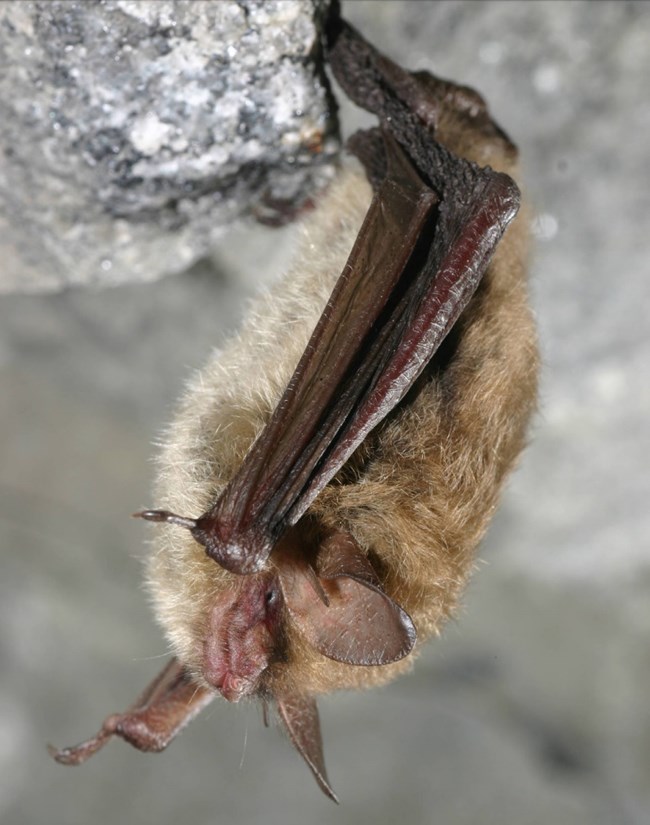Last updated: March 22, 2019
Article
Bat Acoustic Monitoring at Fort Union Trading Post National Historic Site

USFWS/Ann Froschauer
Overview
Fort Union Trading Post National Historic Site is a 440-acre park that straddles the North Dakota and Montana border. The Missouri River flows through the park and is lined by forested floodplain that provides foraging and roosting habitat for bats. Some bats can eat thousands of mosquitoes each night, making them important for insect control along the river and in the croplands that surround this park.
The Northern Great Plains Inventory & Monitoring Network monitors bats to detect long-term trends and to get early warning of undesirable changes in bat populations at the park. A fungal disease called white-nose syndrome is spreading quickly, threatening bat populations in North America. First documented in a New York cave in 2006, this disease is associated with more than seven million bat deaths. It spreads primarily from bat to bat and humans might be spreading the disease by carrying nearly invisible fungal spores on their shoes and clothing from one cave to another. Bat monitoring helps us understand changes occurring with the spread of this devastating disease.
Acoustic Monitoring
Four acoustic recording stations were established in 2015 at Fort Union Trading Post National Historic Site: three d above the floodplain and one in the floodplain. There were 47,095 bat call recordings from stations across all survey nights from 2015 to 2017. The data were analyzed through specialized software programs that make preliminary identifications of the bat species based on individual call characteristics, such as a frequency and shape. Some bat species make calls that are similar to other species, which is why researchers with special expertise review the calls and make the final species determinations.

NPS
Bats at the Park (2015-2017)
| Common Name | Scientific name | 2015–2017 Status |
|---|---|---|
| Big brown bat | Eptesicus fuscus | Present |
| Eastern red bat | Lasiurus borealis | Present |
| Hoary bat | Lasiurus cinereus | Present |
| Silver-haired bat | Lasionycteris noctivagans | Present |
| Western small-footed myotis | Myotis ciliolabrum | Probably Present |
| Long-eared myotis | Myotis evotis | Probably Present |
| Little brown bat | Myotis lucifugus | Present |
| Northern long-eared bat | Myotis septentrionalis | Probably Present |
| Long-legged myotis | Myotis volans | Present |
- Big brown bats and silver-haired bats were the most commonly recorded species, followed by little brown and hoary bats. Hear a silver-haired bat call!
- Eastern red bat, hoary bat, silver-haired bat, northern long-eared bat, and long-eared myotis were new detections for the park.
- Big brown bats were prevalent at the station near the fort structures and little brown bats had the highest activity near the maintenance buildings. Both species are known to roost in buildings.
- Leaf-roosting bats such as eastern red bats and silver-haired bats were more common near several large cottonwood trees that border a parking lot.
- Bat activity is moderate compared to other network parks and may be due to an absence of large old trees. Maintaining the forested Missouri floodplain will be important for maintaining bat populations, including the threatened northern long-eared bat.

USFWS
White-nose Syndrome
White-nose syndrome has not yet been detected at the park, but the fungus (Pseudogymnoascus destructans) that causes it was detected in 2017 in South Dakota for the first time, a few hundred miles south of Fort Union Trading Post National Historic Site. See a map of white-nose syndrome in national parks and learn more about how you can help prevent the spread of this fungus. Continued monitoring, and park staff and visitor observations, will help us protect bat communities that live and forage in the park.
For More Information
Dan Licht, Midwest Region Wildlife Biologist
Protocol Contact: Northern Great Plains Network
Summary by Tani Hubbard, updated in 2019
